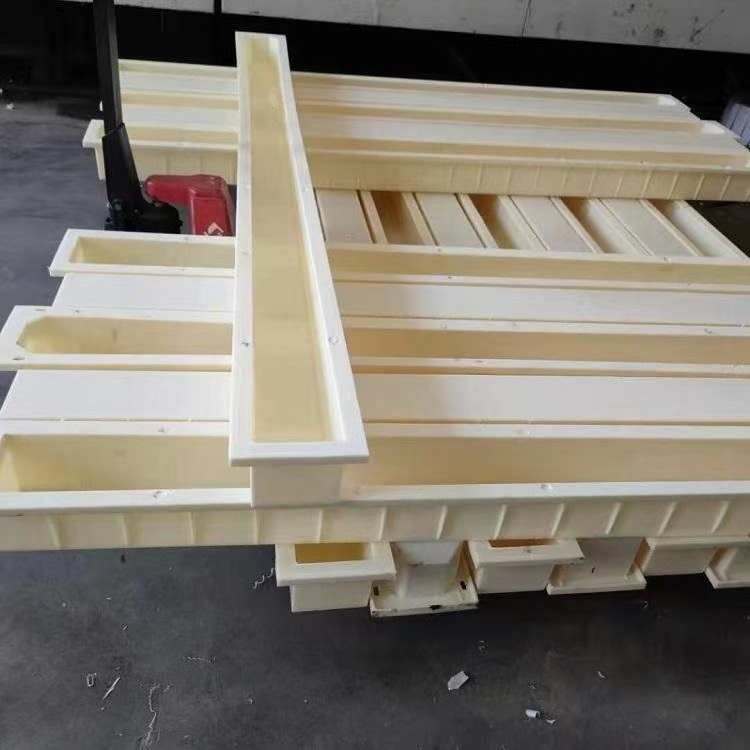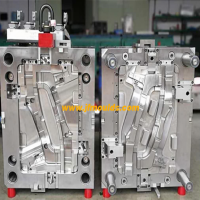Giải pháp cho các vấn đề như minh bạch kém, kích thước không ổn định, điểm và đường màu đen trong các sản phẩm đúc phun
Giải pháp cho các vấn đề như minh bạch kém, kích thước không ổn định, điểm và đường màu đen trongSản phẩm đúc phun
Khiếm khuyết sản phẩm | Lý do có thể | Giải pháp | |
| Tính minh bạch kém của sản phẩm | 1. Nhựa chứa độ ẩm hoặc tạp chất trộn vào. 2. Kích thước cổng quá nhỏ, hình dạng không tốt hoặc vị trí không phù hợp. 3. Bề mặt của khuôn không mịn, với độ ẩm hoặc vết dầu. 4. Nhiệt độ nhựa thấp hoặc nhiệt độ khuôn thấp. 5. Nhiệt độ vật liệu cao hoặc tác dụng cắt đáng kể của hệ thống giao phối dẫn đến sự phân hủy nhựa. 6. Tiếp xúc kém giữa vật liệu nóng chảy và bề mặt khuôn hoặc khí thải kém từ khuôn. 7. Sử dụng không đúng chất bôi trơn hoặc liều lượng quá mức. 8. Tính dẻo của nhựa kém, làm mát kém hoặc không đồng đều của vật liệu tinh thể hoặc độ dày thành không đều của sản phẩm. 9. Tốc độ tiêm quá nhanh và áp lực tiêm quá thấp. | 1. Nên sấy khô trước khi ép phun và tạp chất nên được ngăn chặn không được trộn vào. 2. Sửa đổi kích thước, hình dạng hoặc vị trí của cổng khuôn để làm cho nó hợp lý. 3. Làm khô độ ẩm hoặc vết dầu và đánh bóng bề mặt. 4. Tăng nhiệt độ của xi lanh tan chảy nhựa hoặc nhiệt độ khuôn. 5. Hạ nhiệt độ vật liệu để ngăn chặn sự xuống cấp hoặc phân hủy nhựa. 6. Điều chỉnh hợp lý các thông số áp suất và tốc độ phun, và kiểm tra tình trạng xả của ống xả. 7. Sử dụng một lượng chất bôi trơn thích hợp. 8. Điều chỉnh hợp lý các thông số công nghệ quy trình để ngăn chặn sự làm mát kém hoặc không đồng đều của vật liệu tinh thể. 9. Điều chỉnh tốc độ phun và áp lực để làm cho chúng phù hợp. | |
| Kích thước của sản phẩm không ổn định | 1. Hệ thống điện và thủy lực của máy không ổn định. 2. Các điều kiện kỹ thuật của quá trình ép phun là không ổn định. 3. The technical conditions for injection molding process were improperly set. 4. Insufficient mold strength, bent or worn guide pins. 5. Unstable mold clamping, poor precision, unstable movement of moving parts, and inaccurate positioning. 6. Uneven plastic feeding or uneven particle size, poor plastic plasticization or wear of the machine's melt cylinder and screw. 7. The cooling time of the product is set too short, and the cooling is uneven after demolding. 8. Poor rigidity of the products, uneven wall thickness and unstable post-treatment conditions. 9. Improper plastic mixing ratio, unstable plastic shrinkage or unstable crystallinity of crystalline materials. | 1.Inspect and calibrate the electrical and hydraulic control system of the machine to ensure stable and normal control. 2. Check whether the process technical parameters are stable, whether the feeding system is normal, whether the temperature control system is normal, whether the screw speed is normal, whether the back pressure is stable, and whether the hydraulic systems of each action in injection molding are stable and normal, etc. 3. Check whether the injection pressure is normal, whether the injection and holding time Settings are normal, whether the production cycle is stable, and whether the pressure and speed parameter Settings for each action in injection molding are appropriate. 4. Check whether the guide pins are worn or bent and deformed. 5. Check the precision of the mold and the movement and positioning of the parts, eliminate adverse factors, and ensure that all movements are stable and normal. 6. Check the machine performance. If the gap between the glue cylinder and the screw is too large or the wear is severe, replace or repair it. 7. Extend the cooling time and check the operating condition of the cooling system. 8. Inspect the molds or adjust the process parameters to enhance the stability of post-treatment conditions. 9. Reasonably combine the proportion of recycled materials or waste materials. For materials with unstable crystallinity, make up for it through processes, raw materials, etc. | |
| The product shows spots, black lines, etc | 1.The inner wall of the glue melt cylinder was charred, and the glue blocks fell off, forming small black dots. 2. Air pollution or air inside the mold cavity leads to coking and the formation of black spots. 3. Produce black stripes a. The barrel, screw, or raw materials are not clean. b. Local overheating of the rubber compound in the barrel. c. Cold rubber particles rub against each other and burn when rubbing against the wall of the molten rubber cylinder. d. There is a deviation in the center of the screw, causing it to rub against the wall of the melt cylinder and burn the plastic. e. The nozzle temperature is too high, burning the rubber compound. f. The rubber compound stays in the melt cylinder for too long at high temperatures. 4. Produce brown stripes or yellow lines, etc a. The entire or part of the glue cylinder is overheated. b. The rubber compound adheres to the wall of the glue melt cylinder or the nozzle, resulting in charring. c. The rubber compound stays in the melt cylinder for too long. d. There are dead corners inside the barrel. | 1.Remove the burnt material on the inner wall of the melt glue cylinder: Replace the material in the cylinder with a harder plastic to clean the inner wall of the cylinder. Avoid prolonged use of the rubber compound Occasionally exposed to high temperatures. 2. The plastic should be well sealed and covered with a lid on the hopper. The exhaust duct of the tool and die needs to be modified properly. Modify the design of the die or product or the position of the gate; Increase or decrease the temperature of the melt cylinder and the die to change the flow pattern of the rubber compound in the die. The setting for reducing the injection pressure or speed. 3. Handle them respectively in the following ways. A. Clean the barrel and screw, using a clean and impurity-free raw rice hopper. b. Lower or heat the melt cylinder evenly to ensure uniform temperature. c. Plastics with external lubricants adde d; Lubricant should be added to the recycled materials. Increase the temperature at the rear end of the glue melt cylinder. d. Correct the gap between the screw and the melt glue cylinder to ensure that air can be smoothly discharged from the melt glue cylinder; Avoid using fine powder plastic and avoid the screw and melt glue Frictional heat is generated between the wall surfaces. Fine plastic materials should be granulated before use. e. Reduce the temperature of the nozzle or control the range of temperature variation. f. Try to shorten the molding cycle time as much as possible; Reduce the screw speed, increase the back pressure or perform injection molding on a small-capacity injection molding machine; Try to make plastic as much as possible The material does not remain in the glue melt cylinder. 4. Handle them respectively in the following ways. a. Lower the temperature setting of the glue melt cylinder; Reduce the rotational speed of the screw; Reduce the set value of the screw back pressure. b. Clean the inner wall of the melt glue cylinder, the inner diameter of the nozzle, etc. at the same time and wipe them clean. c. Modify process parameters to shorten the injection molding cycle. d. Replace the screw. |
Khuôn đúc xe máy Công ty TNHH khuôn đúc jiefeng thái Châu (jfmoulds.com)

Thông tin liên quan
Khám phá Vòng đời đầy đủ của khuôn phun và suy nghĩ về những đột phá trong ngành
2025-07-15
Khám phá Vòng đời đầy đủ của khuôn phun và suy nghĩ về sự phá vỡ ngành công nghiệp...
Đa dạng hóa các doanh nghiệp khuôn phun
2025-06-28
Đa dạng hóa các doanh nghiệp khuôn phun 1. Khuôn đúc ô tô: dẫn động...
Xử lý bề mặt của nấm mốc
2025-07-26
Xử lý bề mặt của nấm mốc1. Các quy trình xử lý bề mặt phổ biến mục đích o ...
Một bộ sưu tập các quy trình sản xuất khuôn mẫu, tiêu chuẩn, quy trình và vỏ.
2025-06-19
Biểu đồ Lưu lượng quá trình như sau: tất cả các loại công cụ và sản phẩm được sử dụng trong...
Những khiếm khuyết phổ biến của các sản phẩm đúc phun và các giải pháp của chúng
2025-07-29
Những khiếm khuyết phổ biến của các sản phẩm đúc phun và các giải pháp của họ trong chẩn đoán ...
Nguyên nhân của khiếm khuyết trong các sản phẩm đúc phun
2025-07-27
Nguyên nhân của khiếm khuyết trong các sản phẩm đúc phun phần điện của ...





